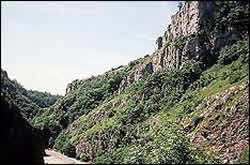
Holiday Cottages 4 U
Wedmore, Somerset
Wedmore is beautifully sited south of the Somerset Levels and the Mendip Hills, halfway between Wells and Burnham-on-Sea. To the north lies Cheddar Moor.
The village grew around a Saxon square. The stone cottages still echo the plan of the original village, the homes faced outwards, their backs to the green, which dates to the 1100's when it was a market centre for the surrounding agricultural area. Not only weekly markets but also an annual 3-day fair made the village a thriving trade centre. The 14th century market cross stands as a testimony to the times.
Luckily for us today, the conservation village survives virtually intact. Stone buildings, some whitewashed, lie scattered among the trees. Much of the architecture relates to Georgian times, the Post Office is a case in point, and earlier. The Old Vicarage dates to the year of Christopher Columbus' discovery of America. Of a later date, probably the 16th century, the George Hotel is a former coaching inn. The Italianate chemist shop on Church St. was once a Victorian department store, a "one stop" shopping spot for Somerset inhabitants. The village of Wedmore still attracts shoppers, tourists and locals alike.
This area is one of the best places in the country for bird watching. The peat moors are a rich source of food for the birds. Limestone caverns dot the surrounding landscape, as do nature reserves. Old farmsteads sit amidst the rolling green hills. Today cheese, livestock, fruit growing, limestone mining and tourism help support the people in the area.
Once, this was the hunting ground for prehistoric man, Iron Age remains have been found in the area along with a number of Roman sites of the 1st century AD.
In the 7th century the area belonged to the Saxon kings of Wessex, the name Wedmore derives from the Saxon term meaning "hunting moor". King Alfred favoured the area with a royal estate. The site of the manor house, adjoining the church, may be the site of his royal house.
In 878 AD, after winning a battle against the Danes, he brought the Danish leader, Guthrum, and 30 of his followers to his estate at Wedmore for 12 days of feasting and ceremonies.
The Danish leader was christened and a peace treaty was signed, allowing King Alfred to unite his kingdom. This Treaty of Wedmore divided England from London to the Mersey. South of the line English custom and law ruled, while north and east, Scandinavian laws and customs were followed, the Danelaw.
The medieval stone church, St. Mary's, standing tall in the village, is thought to be on the site where the treaty signing took place. Like all churches of the times, it is set in a graveyard. Built in the late 1400's, traces remain of a 1200 church, and decorated work dates to possibly the 1300's. A wall painting, circa 1500, of St. Christopher is a special treasure.
In medieval times both the Bishop of Bath and Wells and the Dean of Wells Cathedral oversaw Wedmore parish, which consisted of 3 villages, Wedmore, Blackford and Theale, and 14 hamlets. On a ridge of land rising out of the Levels, between the rivers Axe and Brue, the historic village of Wedmore still reminds us, today, of its ancient past.
10 July 2007